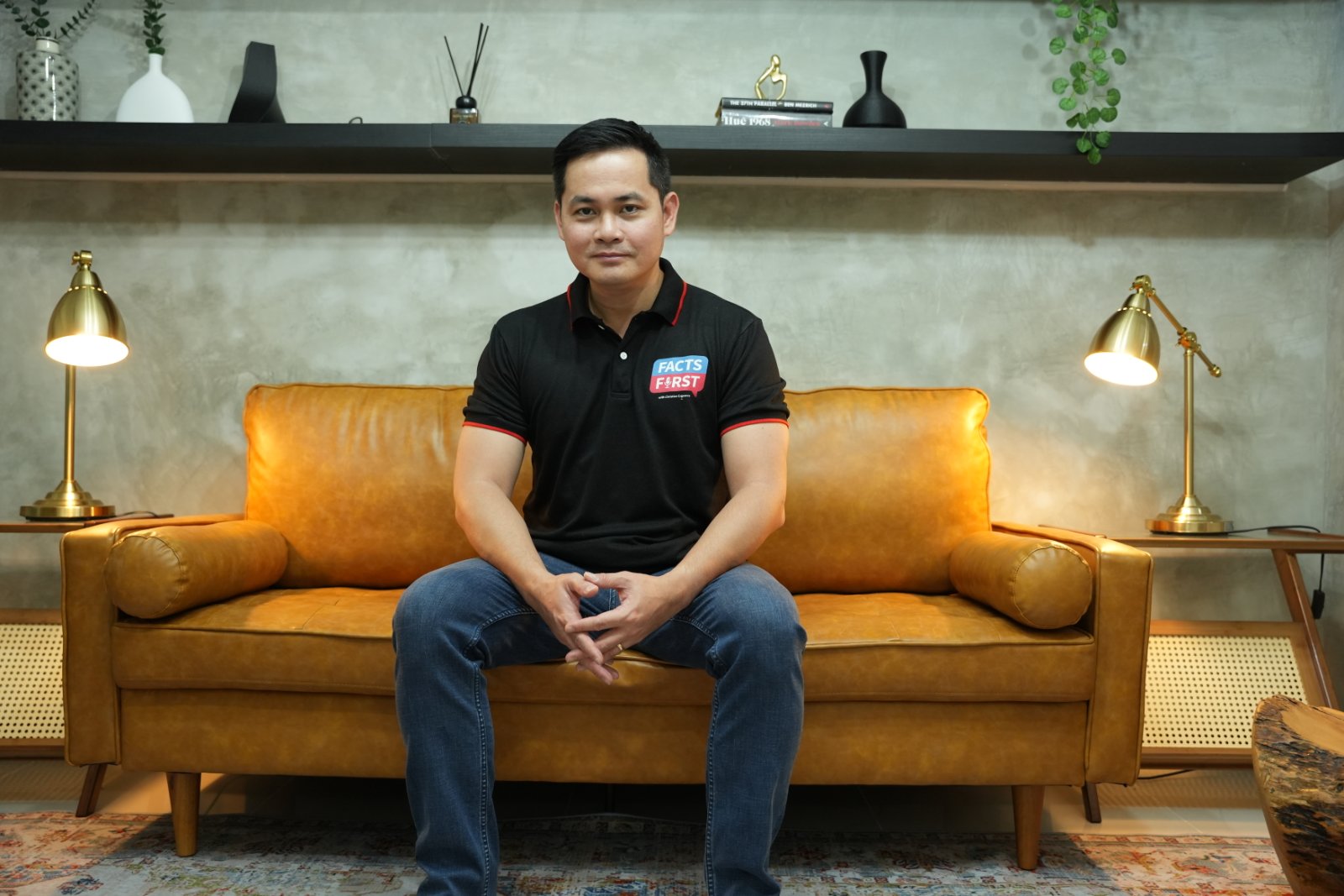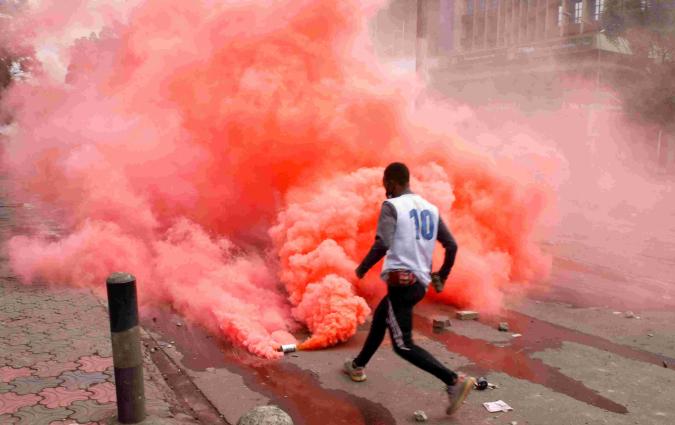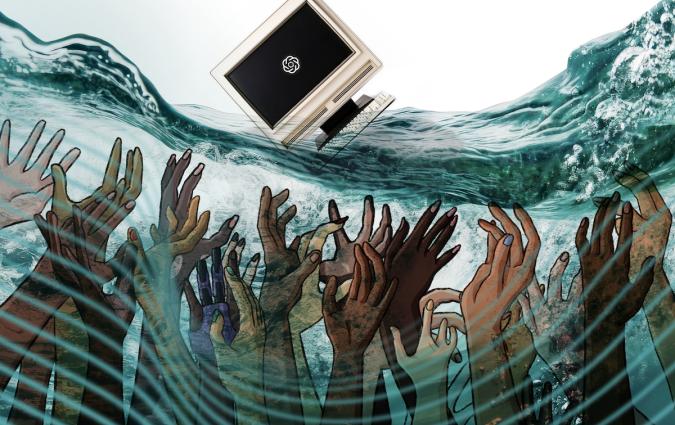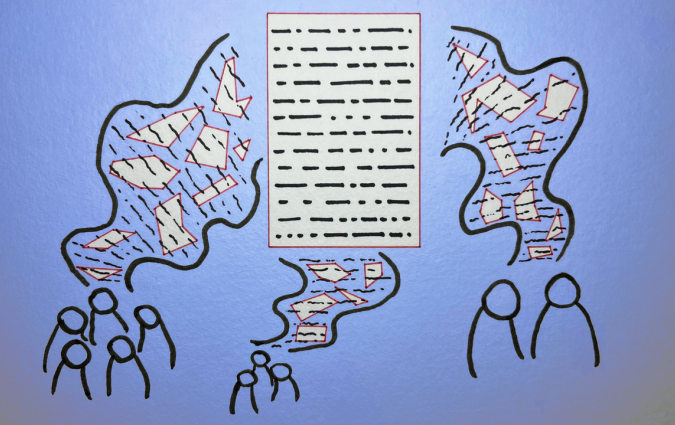This journalist was fired from the largest broadcaster in the Philippines. Then he took his show to YouTube

Filipino journalist Christian Esguerra.
Filipino journalist Christian Esguerra lost his job as an anchor at ABS-CBN only a week before his son was born. At the time ABS-CBN was the Philippines’ largest broadcaster and Esguerra had gotten into the crosshairs of corporate management, following his vocal criticism of then-president Rodrigo Duterte and his allies.
Under Duterte’s rule, ABS-CBN was shut down in 2020 and taken off free-to-air television, the first time the channel went dark since the dictatorship under Ferdinand Marcos. As the company faced increasing pressure to self-censor, Esguerra was on the line. After taking on a diminished role, he was laid off in 2022 and migrated his work to YouTube.
“Everything was driven by necessity,” Esguerra said about his move. His former bosses let him riff off a passion project: an experimental broadcast segment known as “After the Fact,” first produced for TV. After leaving the network, Esguerra rebranded the podcast into “Facts First,” began producing it on video livestreams, and rebuilt his career on a new platform.
Since then, Esguerra has gained over half a million subscribers on YouTube, becoming a pioneer in the journalist-to-influencer pipeline for long-form video. YouTube is the second most used social network in the country, with 50% of Filipinos using it for news. As Esguerra ventures into analysis and commentary over hard news, he says his primary rule is: every opinion should be based on facts.
Esguerra remains critical of the ruling administration, led by the late dictator’s son Ferdinand Marcos Jr., and often points to the president’s family history of corruption and disinformation campaigns. Esguerra explains this criticism is non-partisan: “I tell [my audience], you don’t have to worship anyone even if you feel this politician is a saviour. I criticise the sitting president because he is the president. If it were another president… it’s not like the rules of the game will change.”
Esguerra also engages the ruling government on issue-based topics, and has hosted interviews with officials in Marcos’ administration, including presidential spokeswoman Claire Castro and justice secretary Boying Remulla.
“[Christian] takes sides [and] his audience will understand that in a good way. He sides with ‘facts first,’ and everything else flows from that,” said John Nery, journalism lecturer at Ateneo de Manila University and a veteran political columnist and editor. “He has tapped into a particular need: many people these days want their news reported with a definite, and clarifying, point of view.”
From initially running three times a week, the show moved into daily production in 2023. Esguerra creates news content full-time, on top of teaching journalism at the University of Santo Tomas. Facts First now is made by a small team: Esguerra, who runs hosts and operates livestreams; a corporate secretary-and-treasurer; a creative director; and a video editor. Their tagline is “No holding back” — a shift to offense, Esguerra says, from Nobel Peace Prize laureate Maria Ressa’s famous slogan Hold the line.
Facts First runs on weeknights typically for an hour, featuring one or two guests who analyse current affairs. Esguerra primarily covers politics. Most recently he debunked disinformation surrounding the ongoing impeachment trial of vice president Sara Duterte, and ran an interview with a Coast Guard spokesman on a libel case against a pro-Duterte influencer following repeated harassment for his work.
I recently spoke to Esguerra about his transition to a non-traditional platform and being on the frontlines of the information war. Our conversation has been edited for clarity and length.
Q. As someone schooled in the ways of traditional journalism, what’s changed about your perception of what or who a journalist is?
A. I belong to a generation that saw the shift from analog to digital. When I was starting, the focus was on print. For the longest time, I thought this was the pure form of journalism: long-form. I didn’t care too much about whether the article was understood by the common reader. But I was not resistant to change.
There are so many possibilities available now. It’s the best and the worst of times to be a journalist. I’d like to focus on the best because there are many available avenues for us to tell a story. You still have to focus on writing, but that doesn’t mean you have to abandon other platforms available to you.
I’m enjoying [myself] now. It’s a nice situation where you can do what you want, and still sustain it. I’m having fun. You’re in full editorial control of what you want to do. [The] line between journalism and content creation [has] been [blurred] because of so many people doing content on social media. But I always tell people: all journalists are content creators when they go online, but not all content creators can be journalists.
Q. Since going independent, how do you protect yourself from potential legal threats or harassment?
A. I make sure everything I say is objectively verifiable and defensible. Sometimes when I slip during a live program, I say, ‘I’m sorry, I misspoke.’ […] If you’re independent, you’re not protected by any legal team built by your company. I make sure that everything I come up with is objectively verifiable. But it can’t stop people from filing lawsuits [against me]. Fortunately, there haven’t been any.
In terms of harassment, there’s a lot, but you have to know whether these messages or threats are real or not. [If] the threat contains things like, ‘We know where you live,’ ‘We know where you are,’ I take those seriously. I limit going out. When journalist Percy Lapid was killed, a lot of people sent me expressions of concern. Others would say, ‘You’ll follow.’ At that time, I was cautious. It wasn’t yet clear why he was killed and who did it. So I changed my routines.
The line between journalism and content creation has been blurred. But I always tell people: all journalists are content creators when they go online, but not all content creators can be journalists

Q. One of the things you’ve succeeded at is creating a community among viewers, the so-called ‘Factsnatics.’ What do you know about your audience?
A. Our audience is mostly around 45 and up, but the show has] gained traction with a much younger audience. Most of the viewers come from the Philippines. But some live in the US, Canada and Europe. There’s a lot of them in Hong Kong, Singapore, and other Southeast Asian countries. There’s not a big disparity between men and women.
[The show attracts] those who are angry at dictators, the ones who are a bit ‘woke’… But I tell [my viewers], you don’t have to worship anyone… There are occasions where I meet certain people who say, ‘We used to be DDS (Diehard Duterte Supporters), we voted for Duterte… We were converted.’ They said they watched [the show].
Q. How crucial is it for journalists to shift to content creation and media entrepreneurship? These weren’t even in the lexicon of journalists around 15 years ago.
A. One of the principles I really love and fight for is independence… That’s a non-negotiable to me. I realised that if you really want to be truly independent — not just from corporate interests, but even from advocacies that compromise or run contrary to your own values… you have to do your own journalism.
You can do that now, in particular with YouTube. I studied other platforms. On TikTok, it’s hard to be independent and earn money at the same time, because you have to engage with the promotions of products. You have to tie up [with brands] for your content to be paid for… I use it to amplify [the show], but YouTube fortunately has a monetisation scheme that rewards short content.
I don’t advise young journalists with just a few years in the industry to do independent journalistic content creation yet. I encourage them to join mainstream news organisations for them to learn the tricks of the trade. You don’t get the principles involved in a snap. You’ll learn a lot from struggling in the corporate setting, dealing with sources. I don’t encourage them to take the leap, but [it] is a good option. You can have journalistic content creation, at the same time work in a mainstream news organisation, as long as they allow you. Later on, that’s a good fallback.
That’s what’s difficult with journalists: We’re not business-minded. I didn’t think like that either, but I was pushed to. Then I realised I liked doing it. When people ask me, ‘Don’t you miss mainstream media work?’ I say no. The best part is, you don’t have any boss. But it’s very challenging — it’s sink or swim. If you don’t do it consistently, [you’d have] nothing, but the reward is invaluable.
Q. What can you tell us about your different income streams and how you’re able to make a living out of the work you do in Facts First?
A. [Merchandise] generates income, but not a lot. The bread and butter is YouTube. Around 95% of our income comes from watch views and ads. The rest comes from merch. Let’s just say the revenue doesn’t make me miss my work in mainstream [media], but you have to strategise. I studied all that, and it’s a process of learning.
There’s still a lot I don’t understand. But I wanted to prove there was a niche on YouTube for serious journalistic content. Fortunately, I discovered there was. There was a credibility I formed on mainstream that I brought here. I realised that the raw authenticity of your voice is very important. They can tell when you’re fooling or bluffing them, so they get turned off.
I use Meta for amplification of content, to draw more viewers to YouTube. Some content creators I know focus on Meta, but audiences on YouTube and Meta are different. Just because a lot of people watch you on YouTube doesn’t mean you’ll be a blockbuster on Meta. I see some political commentators and content creators who are strong on Meta, but on YouTube, not really. And I have a feeling why – because their content is not tailor fit for YouTube… Lots of factors are involved.
Q. How do you navigate the changing nature of social media platforms, especially knowing that their algorithms can change suddenly and that they haven’t been doing enough to curb disinformation?
A. I try to maximise whatever platform is available given this wave of restrictions. I honestly don’t take Meta or Twitter that seriously when it comes to producing journalistic content. You can criticise what’s happening on a platform and use your content to contribute to the public pressure and force these platforms’ owners and policymakers to do more in the fight against disinformation.
Q. In the past, you mentioned you welcome more journalists coming to the platform. The more journalists are there, you said, the better position the industry will be in to fight for democracy. Could you tell us more about this particular stand of yours?
A. One of the good things that came out of Duterte’s treatment of the media [was] that we banded together. We realised we had to set aside competition because we had a bigger monster to slay. When you go to social media… you don’t necessarily have to compete. Some ask me, ‘Is it OK if we go on at the same time as your time-slot?’ No problem. It’s on demand. Even if they don’t watch you now, they can go back to your video later on. They don’t have to watch it all at the same time or in one sitting.
I see social media as a universe expanding. We don’t even know the limits of it. We don’t know where it ends. We know it’s polluted by so many content creators with so many shenanigans. So why not put more journalists there? More historians, instead of pseudo-historians. We have to populate it as well. And we don’t have to compete. By providing more factual information, even if the content is the same, we’re doing great work in improving the level of public discourse in our country.
In every email we send you'll find original reporting, evidence-based insights, online seminars and readings curated from 100s of sources - all in 5 minutes.
- Twice a week
- More than 20,000 people receive it
- Unsubscribe any time
signup block
In every email we send you'll find original reporting, evidence-based insights, online seminars and readings curated from 100s of sources - all in 5 minutes.
- Twice a week
- More than 20,000 people receive it
- Unsubscribe any time






